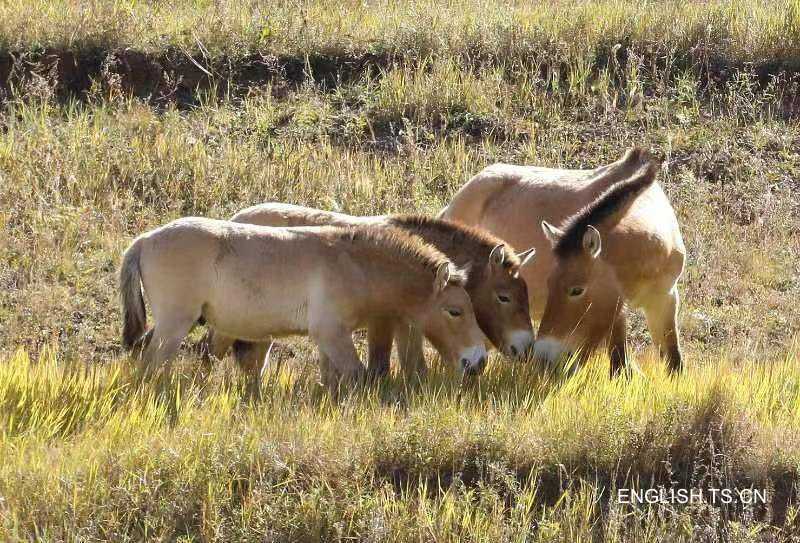
Przewalski's horses settle in Daqing Mountain National Nature Reserve in north China's Inner Mongolia Autonomous Region after they moved there from Xinjiang Uygur Autonomous Region in 2021. (Photo by Zhang Hefan)
Two herds of Przewalski's horses, reintroduced to the wild from northwest China's Xinjiang Uygur Autonomous Region, have settled in their new home in the Inner Mongolia Autonomous Region after two years of adaptation.
The herds, made up by one stallion, eight mares and four foals, now roam in the Daqing Mountain National Nature Reserve. They were reintroduced there from Xinjiang in September and October in 2021.
"The Przewalski's horses quickly adapted to life in the wild after returning to their historical habitat," said Horintawun, deputy chief of the Daqing Mountain National Nature Reserve Service. Two stallions died in fighting for head horse, and one mare passed away from illness. "Other than this, the Przewalski's horses are living a pleasant life and also successfully reproduced," Horintawun said.
The horse, named after Russian explorer N. M. Przewalski who first described it scientifically in the late 19th century, is the last wild horse subspecies surviving in the 21st century. It is dubbed a "living fossil" throughout 60 million years of evolution, and thus is as precious as China's giant panda.
The subspecies was declared extinct after none was found in the wild since the 1960s, but the discovery of a mature horse in 1996 prompted the International Union for Conservation of Nature to reclassify it as critically endangered in 2008.
China started reintroduction efforts for the subspecies in 1985 and set up breeding bases in Xinjiang and Gansu. After close to 40 years of continuous efforts, the population of Przewalski's horses in China hit 700, one third of the global total.
Daqing Mountain National Nature Reserve in Inner Mongolia was chosen as the home for the Przewalski's horses because it was once the habitat for the subspecies, said Hu Defu, a professor with the School of Ecology and Nature Conservation of Beijing Forestry University. "Another reason is that the grassland is well conserved in the nature reserve and can serve as the habitat for the horses," said Hu, who has been monitoring and studying the subspecies for 20 years in Xinjiang.
"The reintroduction efforts not only help restore the ecosystem of the grassland, but also maintain biodiversity, biological integrity and coevolution of flora and fauna," said Hu.
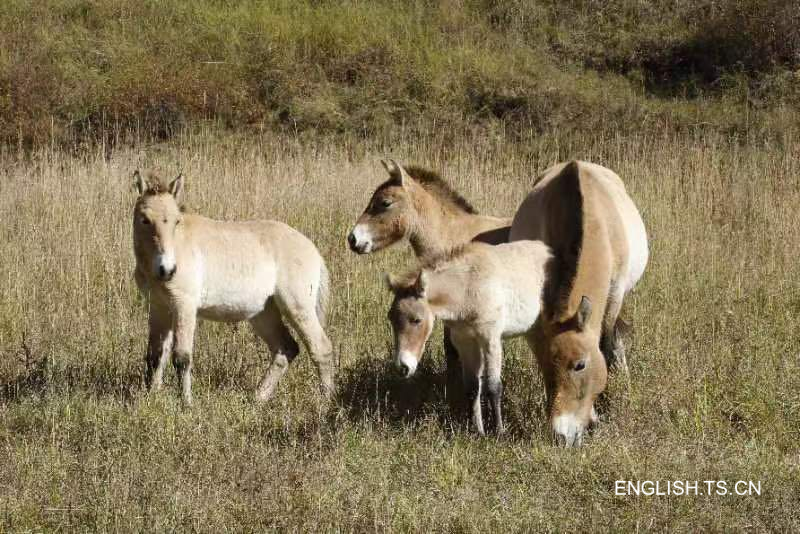
Przewalski's horses settle in Daqing Mountain National Nature Reserve in north China's Inner Mongolia Autonomous Region after they moved there from Xinjiang Uygur Autonomous Region in 2021. (Photo by Zhang Hefan)
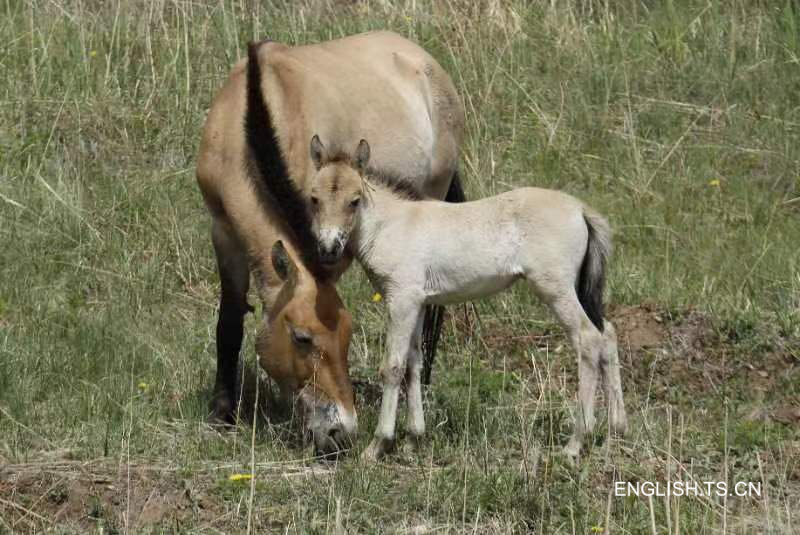
Przewalski's horses settle in Daqing Mountain National Nature Reserve in north China's Inner Mongolia Autonomous Region after they moved there from Xinjiang Uygur Autonomous Region in 2021. (Photo by Zhang Hefan)
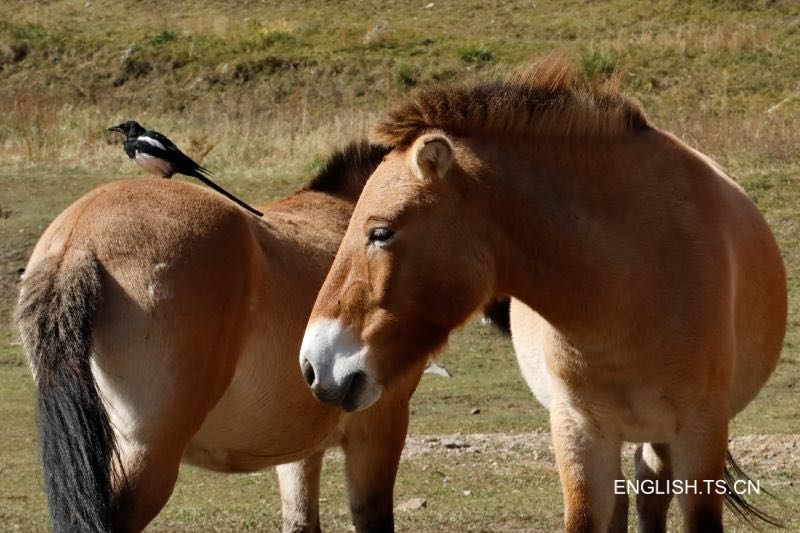
Przewalski's horses settle in Daqing Mountain National Nature Reserve in north China's Inner Mongolia Autonomous Region after they moved there from Xinjiang Uygur Autonomous Region in 2021. (Photo by Zhang Hefan)
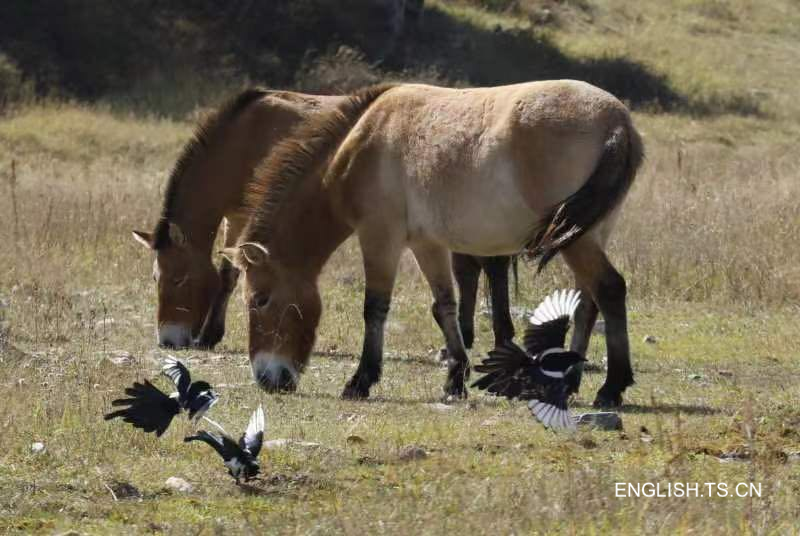
Przewalski's horses settle in Daqing Mountain National Nature Reserve in north China's Inner Mongolia Autonomous Region after they moved there from Xinjiang Uygur Autonomous Region in 2021. (Photo by Zhang Hefan)



